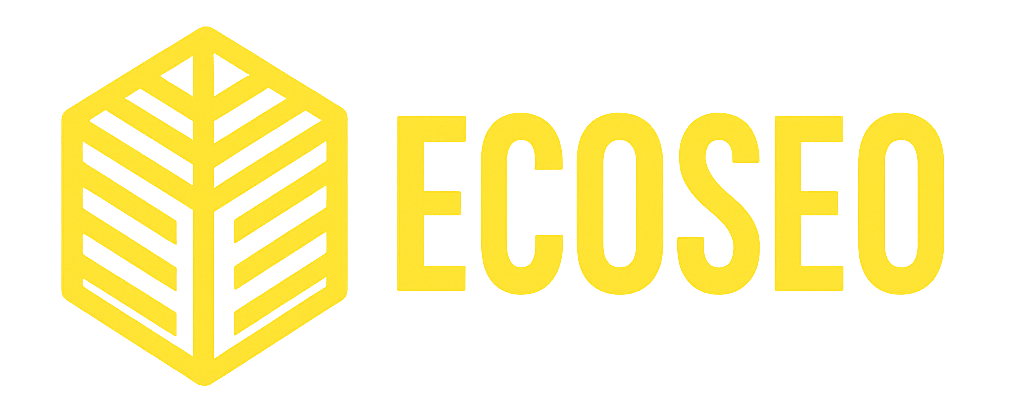Writing SEO content is all about finding that middle ground between pleasing Google and pleasing your readers. You want your content to show up in search results and be helpful, easy to read and worth sticking around for. In this guide we’ll cover the basics—what SEO content is, how it works and some simple ways to get your content noticed (and clicked).
What is SEO Content?
SEO content is just online content written with search engines in mind. Blog posts, landing pages, product descriptions—anything that’s designed to show up when people search for something. But it’s not just about keywords. Good SEO content matches what people are really looking for, answers their questions and gives them value. When done right it helps your site rank and keeps visitors around once they get there.

How to Write SEO Content (Without Making It Boring)
1. Know Who You’re Talking To (and Why They’re Searching)
Understanding Search Intent
Ok, so before you start writing, you first need to get into the reader or buyers head. What is this person looking for? What kind of question or answer do they want read? If you have the answer – that is where search intent come into?
So what is Search Intent, Anyway?
Think of search intent as the real reason someone types something into Google. Are they trying to learn something? Find a brand? Buy something? Your job is to figure that out and tailor your content to match.
Here is a quick explanation (and examples) for all the kinds of Search Intent:
Types of Search Intent:
Informational Intent:
For Informational Intent, people is just looking for learn something. For this kind of content, there is no strings attached—they want answers or a better understanding of something.
Examples: “How to bake a cake”, “What is SEO”, “Benefits of yoga”
What to create: Helpful guides, how-to’s, tutorials, listicles, and FAQ-style content. Focus on being genuinely useful.
Navigational Intent:
For this kind of Intent, these users already know where they want to go—they’re just using Google to get there faster.
Examples: “Facebook login”, “Netflix homepage”, “Nike running shoes”
What to do: Make sure your site and brand pages are easy to find. Optimize your titles, URLs, and meta descriptions with your brand or product name.
Transactional Intent:
This is where people are ready to buy. They’ve done their research and now they’re looking for the best place to take action.
Examples: “Buy wireless headphones”, “Best laptop deals”, “Subscribe to Spotify”
What to write: Product pages, service descriptions, pricing comparisons, and reviews. Use action words like “buy,” “shop,” “deal,” and “order.”
Commercial Investigation Intent:
These folks aren’t quite ready to purchase yet, but they’re seriously thinking about it. They want to compare options, read reviews, and make a smart choice.
Examples: “iPhone vs Samsung”, “Best coffee machines 2025”, “MacBook Air review”
What works best: In-depth comparisons, buying guides, pros and cons lists, and feature breakdowns. Be honest, helpful, and detailed.

SEO Tools to Help You Figure Out Search Intent
- Keyword Research Tools – The first step in keyword research should begin with Google Keyword Planner and SEMrush. The tools reveal search term popularity levels and competition intensity along with additional related search queries. That last one? Super useful for seeing what users are actually looking for. The search results indicate whether users want information or want to compare options or make a purchase.
- SERP Analysis – Before you fully commit to a keyword you should search for it on Google. Seriously. Take a good look at what’s already ranking. Is it blog posts? Product pages? Maybe a how-to video or a “People also ask” box? The search results provide essential information about user expectations which helps you understand their search intent.
- User Behavior Tracking – Google Analytics allows you to track user behavior after people visit your website. Are they bouncing fast? Sticking around? Clicking deeper? Your content fails to match their search requirements if you receive inappropriate or no website traffic.
- Query Refinement Patterns – Ever notice how people start with a broad search, then get more specific? That’s gold. The evolution of user behavior from browsing to decision-making becomes visible through these patterns. The search pattern shows how users progress from “best running shoes” to “buy Nike Air Zoom for flat feet.” The intent transforms into a different form in real-time.
The key to successful SEO performance lies in understanding search intent.
- Content Creation – Create content that aligns with the intent. Informational content needs to be detailed and educational while transactional content requires direct and conversion-oriented language.
- What is it purpose – Each page on your website should have one main purpose to fulfill. Use relevant keywords and meta descriptions and headings which match the intended purpose.
- How does the user experience the page? Your website design should lead users through their journey according to their intended actions. Informational pages should direct users to commercial investigation or transactional pages through internal linking.
- What is the page content structure? The use of structured data enables search engines to better understand the purpose of your content. Review markup serves to enhance product reviews while FAQ schema improves the visibility of informational content.
- Monitor the results – Regular monitoring of search intent changes should be performed because market trends and seasonal changes and consumer behavior shifts require content adaptations.
Implications:
- Higher Relevance: Your content will be considered more relevant by users when it matches their search intent which results in better rankings and engagement.
- Conversion Rates: Content alignment with user intent leads to improved conversion rates particularly when users are in transactional or commercial investigation stages.
- User Satisfaction: User satisfaction directly results from satisfying search intent which leads to increased user visits and sharing activities and positive search engine signals.
The practice of understanding search intent serves a dual purpose of optimizing SEO while developing content that fulfills user needs at specific points during their search process.
Search intent stands as a vital ranking element which search engines including Google utilize to evaluate websites. The search algorithms RankBrain and BERT analyze user queries to select content which matches the intended purpose.
Websites that create content based on their targeted keywords’ primary search intent will achieve better ranking positions.

2. Perform Keyword Research
The search volume and competition level of relevant keywords can be found using Google Keyword Planner and SEMrush and Ahrefs. The content should include primary and secondary keywords which should appear naturally in headings and meta descriptions.
Step 1: Define Your Niche and Goals
Identify your target audience and set SEO objectives.
Step 2: Brainstorm Seed Keywords
Begin with general topics which relate to your business operations.
Step 3: Use Keyword Research Tools
- Google Keyword Planner allows users to enter seed keywords for analyzing volume and competition and CPC data.
- SEMrush provides two tools: Keyword Magic Tool for keyword idea generation with volume and difficulty and intent filters and Keyword Gap Tool for competitor keyword identification.
- Ahrefs: Keywords Explorer for volume, difficulty, and click potential.
Step 4: Analyze Long-Tail Keywords
- The tool AnswerThePublic and Google’s “People also ask” help users discover more specific phrases.
Step 5: Consider User Intent
Match keywords to user intent (Informational, Navigational, Transactional, Commercial Investigation).
Step 6: Check SERP Features
Each keyword requires an examination of Google’s search engine results page to determine which results appear and which features are displayed.
Step 7: Organize and Prioritize
Group your keywords by theme before selecting the most important terms based on their volume and competition level, and their alignment with your objectives.
Step 8: Monitor and Adapt
Track keyword performance and adapt strategies over time.
Example for “Fitness”:
High Volume, High Competition: “fitness”
The search term “home workout routines” has a moderate volume and moderate competition level.
Long-Tail, Lower Competition: “best exercises for lower back pain”
Informational: “How to start exercising at home”
Transactional: “buy adjustable dumbbells online”
The method allows your content to match search engine queries, which enhances both search engine optimization and user interaction. Does this make sense?

3. Create high-quality content that engages readers
To develop content that engages readers while maintaining high-quality standards, you need to focus on these key elements:
Understand Your Audience Deeply:
Start by learning about your readers through research. Establish audience personas to grasp how they communicate and what challenges they face, and what type of language they prefer. You can gain demographic insights through Google Analytics or use surveys to obtain direct feedback from your audience. Your content needs to address their inquiries while addressing their issues or entertaining them.
Pick Topics That Hits the spot – Select topics that match your audience’s current interests through Google Trends analysis. This approach requires a combination of present-day topics with topics that remain relevant throughout time. Brainstorm content that combines educational value with motivational or thought-provoking material.
Make a headline that Slap – Your headline serves as the first opportunity to attract readers, so you need to create headlines that are both attention-grabbing and SEO-friendly. The headline needs to contain essential keywords for SEO optimization, yet should also be interesting to readers. The most effective headlines use either numbers or ask questions, or guarantee advantages, such as “7 Unbelievable Ways to Boost Your Productivity.”
Numbered headlines starting with “5 Tips for Success” produce 20% more clickthroughs than unclear headline options, according to research. Numbered content remains the fundamental element that digital media uses to create attention-grabbing headlines known as clickbait.
Write With Clarity and Purpose: Use simple, direct language where possible. Your content needs to present itself in short paragraphs with simple sentences that readers can understand. Your article needs an introduction that defines expectations, followed by a body section that delivers value, and a conclusion that offers a takeaway or directs readers to take action.
You got to make it easy to read – The text becomes easier to read when you incorporate subheadings and bullet points, and numbered lists. The method improves both the user experience through better scanability and search engine optimization by making important information more visible. You should use bold or italics for emphasis only when necessary, but avoid overusing them.
Create Simple Content (Easy to understand) – Users prefer websites that present content that is both simple to comprehend and straightforward to navigate. The presentation of information in a simple format, combined with easy navigation, creates an enjoyable browsing experience. Search engines favor strong readability because it results in positive signals that improve your site’s search engine rankings.
You got to tell us a story – Storytelling in informational content enables readers to become captivated by the narrative. The use of anecdotes and case studies, and hypothetical examples demonstrates points effectively to readers. The storytelling method helps your content become both engaging and memorable to readers.
The Content needs to be actually help the reader – Your content needs to deliver genuine value to readers through educational material and problem-solving solutions, and entertaining content. Every piece of content should provide readers with a meaningful outcome, whether it is knowledge acquisition or problem resolution, or inspirational value. Your content needs to deliver concrete instructions that users can apply right after finishing their reading.
Do some keyword SEO (we do that) – You should incorporate your researched keywords naturally yet maintain your content’s readability. Your content should contain internal and external links, which both add value and provide context to the summary presented in meta descriptions.
Add some pretty pictures – Visual elements such as high-quality images, together with infographics and videos help split up text and help readers understand the points through visual illustrations. The visual content requires optimization for SEO through alt text image description, and it must improve the narrative and informational value of your content.
Posts that include images receive 94% more views compared to plain text, and visual content, including charts and graphs and colourful designs, increase performance. The visual quality of videos directly affects consumer trust in brands, according to 87% of consumers.
Make the reader think and answer you – Your articles need to conclude with either questions or comments sections, or social sharing buttons to encourage audience interaction. Interaction can lead to community building and provide you with feedback on what resonates with your audience.
Think about your Business – Write in a tone that matches your brand personality by staying authentic while keeping everything transparent. Your content needs to include complete transparency about both your sources and the data and limitations in your knowledge. Authenticity builds trust.
Update Regularly: Keep your content fresh. Regular content updates require both new post additions and periodic updates of existing content to maintain reader relevance, which benefits both audience engagement and search engine optimization.
Content Flow: Begin with a hook that tells a story about someone who improved their life through minor adjustments. The introduction explains that everyday habits, when practiced consistently, produce major positive effects.
Your content will both attract readers and keep them interested as they return for more information, which will boost both your site’s authority and its search engine optimization performance.

4. Optimize On-Page SEO Elements
Your website needs proper optimization of on-page elements to achieve better search engine results page rankings. The following steps explain how to optimize on-page SEO elements effectively.
Title Tags
The main function of title tags serves two purposes by showing search engines what the page contains while also helping users understand the page content.
Optimization:
- The first part of your title should contain your main keywords because it will improve search engine visibility.
- The title should remain short since longer titles get cut off in search engine results pages (SERPs).
- The title needs to attract users to click but it must also present an accurate summary of the page content.
Example: Best SEO Practices for Beginners – Improve Your Rankings
Meta Descriptions:
The purpose of meta descriptions in search results is to give users with a short summary of page content.
Optimization:
- The content should contain relevant keywords but the main goal should be to make users want to visit the page.
- The length of your description should stay between 155 and 160 characters to prevent truncation in search engine results pages.
- The content should include a call-to-action whenever possible.
The meta description tag contains this content: “Discover the best SEO practices for beginners. The guide provides simple methods to enhance your website position in search results. Start optimizing now!”
Header Tags (H1, H2, H3, etc.)
The purpose of header tags is to organize content for better user understanding while improving search engine optimization.
Optimization:
- The main H1 tag on each page should contain your main keyword while remaining the only H1 tag on the page.
- The content organization depends on H2 and H3 tags which serve as subheadings to divide the text into sections.
- HeaderCode tags should include keywords when possible but maintain readability as the top priority.

5. Content Quality and Keyword Usage
Purpose: To provide value to users and signal relevance to search engines.
Optimization:
- Create content that delivers value to users while showing search engines your relevance.
- Use keywords naturally; avoid stuffing. Aim for a keyword density that feels organic.
- Use synonyms and long-tail keywords to reach users who search with different terms.
Focus on Readability and UX
Your website needs to be both SEO-friendly and user-friendly to deliver an enjoyable experience for visitors. The following steps will help you optimize these aspects:
Readability:
Clear, Concise Language:
Use simple language that your readers can easily understand. Use technical terms only when your audience has experience with them. Set your readability score according to the literacy level of your target audience. The Hemingway Editor tool helps users create more straightforward content.
Paragraph Length:
The ideal paragraph length should be between 2-3 sentences. The text becomes easier to read and easier to scan when it is broken up into smaller sections.
Use of Headings and Subheadings:
The main title should be marked as H1, followed by H2 and H3 for subheadings. The structure enhances SEO performance while enabling users to find content quickly.
Lists and Bullet Points:
Complex information becomes easier to understand when you use lists or bullet points to highlight important points.
Font Choice and Size:
Select a font that works well on different devices. The most suitable fonts for screens are Arial and Helvetica, which belong to the sans-serif category. The text should be large enough for mobile users to read comfortably. The minimum body text size should be 16px.
Contrast and Colour:
The text needs to have enough contrast with the background to maintain readability. WebAIM’s Contrast Checker provides a tool to check contrast levels. Use colors to draw attention to important details while preventing the text from becoming too overwhelming.
Whitespaces:
The use of white space around text blocks enhances readability because it minimizes visual distractions.

Keep Content Up-to-Date:
A website needs up-to-date content to stay relevant and maintain authority and search engine optimization performance. Here’s how to ensure your content remains current:
Regular Content Audits:
- Schedule Audits: Set a regular schedule (e.g., quarterly or biannually) to review your content.
- Content Inventory: Use tools like Screaming Frog or Google Search Console to get a full list of your site’s pages.
- Evaluate: Look at metrics like traffic, engagement (time on page, bounce rate), and conversion rates to determine which content needs updating.
Update Outdated Information:
- Fact-Check: Revisit facts, statistics, or any time-sensitive information to ensure accuracy.
- Current Trends: Integrate recent developments, news, or trends in your niche. Use tools like Google Trends to spot what’s new.
- Broken Links: Fix or replace dead links, both internal and external, to maintain site integrity and user trust.
Enhance Existing Content:
- Fresh Insights: Add new insights, case studies, or examples to enrich content.
- Expand Content: If a piece is still relevant but short, consider expanding it with additional sections or related topics.
- Keyword Refresh: Re-evaluate keywords to see if there have been shifts in search behavior. Update content to reflect these changes for better SEO.
Improve User Experience:
- Readability: Even if the information is up-to-date, consider whether the content’s presentation could be improved for better readability or engagement.
- Visual Updates: Refresh images, infographics, or videos to keep visual elements current and engaging.
SEO Optimization:
- Meta Data: Update meta titles, descriptions, and URL slugs to align with current best practices or new keyword research.
- Schema Markup: Enhance or update schema markup to reflect changes in content or to take advantage of new SERP features.
- Internal Linking: Update internal links to lead to fresh or more relevant content, improving site structure and user navigation.
Engagement and Feedback:
- User Feedback: Use comments or feedback from social media to see what additional information users are looking for or what’s outdated.
- Analytics: Monitor user behavior through Google Analytics or similar tools to see where users drop off or what content gets revisited.
Maintain a Content Calendar:
- Plan Updates: Alongside new content, schedule time for updates. This ensures you’re not just adding new but also maintaining old content.
- Theme Months: Consider thematic updates where you revisit content related to seasonal events, industry changes, or anniversaries.
Automate Where Possible:
- Alerts: Set up Google Alerts for your industry to automatically notify you of new developments that might affect your content.
- RSS Feeds: Follow industry blogs or news via RSS to stay on top of updates without manual checking.
Example Process:
- Audit: Review your blog post on “SEO Trends 2023.”
- Update: Find that several trends have evolved or new ones have emerged by 2025. Update the post to reflect these changes, including new statistics or case studies.
- SEO: Revise meta descriptions to include new keywords like “AI in SEO” if it wasn’t covered before.
- UX: Refresh visual aids, perhaps adding a new infographic showing the evolution of SEO trends.
By keeping content up-to-date, you not only enhance user satisfaction but also signal to search engines that your site is an authoritative, current source of information, which can lead to better rankings, more traffic, and increased engagement.
Conclusion
The process of writing SEO content demands equal attention to user intent alongside readability and optimization techniques. Your search rankings and organic traffic will increase when you create high-quality valuable content while following best practices.
FAQ About How to Write SEO Content
What makes content SEO-friendly?
SEO-friendly content requires thorough research and keyword optimization and follows a readable structure while delivering meaningful value to users.
How often should I update my SEO content?
The maintenance of rankings and relevance requires updating your content at least every 3-6 months.
Do keywords still matter in SEO?
Yes, but they should be used naturally. Google gives priority to what users want to find instead of forcing keywords into content.
How long should an SEO article be?
The length of an SEO article depends on the topic but articles longer than 1,500 words tend to achieve better search engine rankings.
Is SEO just about content?
The practice of SEO requires both technical optimization and link building and site performance enhancement in addition to creating high-quality content.



